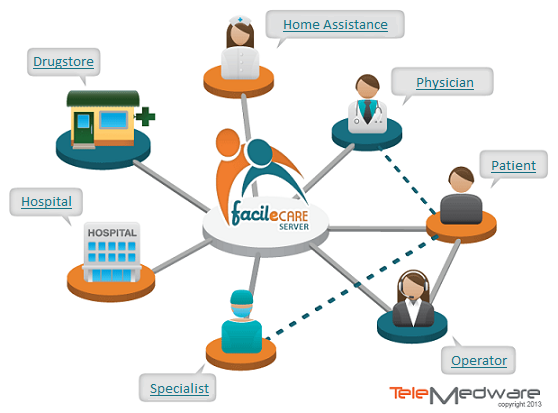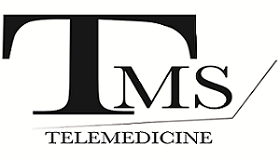
TELEMEDICINE PROJECT in collaboration with Telemedware Srl (Italy)

TELEDIABETOLOGY
Remote monitoring of blood glucose and of other vital parameters with data recording and remote display
TELEDERMATOLOGY:
Application of telemedicine solutions for the remote diagnosis of dermatological images, or the decisional process as an aid in the diagnosis or in the therapy for Dermatologists.
CHRONIC PATHOLOGIES:
Remote monitoring of patients with heart failure, Chronic Obstructive Pulmonary Disease (COPD), etc.
TELEPARKINSON PROJECT
Rational:
The treatment of patients affected by Parkinson at an advanced stage is based on an exact classification, quantification, and documentation of their motor fluctuations.
The best solution would be a tool capable of giving a precise documentation of the treatment in a familiar context in order to allow for a therapy suited to the individual symptoms of the patient, seen their daily motor fluctuations, physical and mental loads, if not the social environment surrounding them.
TMS Telemedicine South Tyrol Srl offers a tool that grants a connection between hospital therapy and home assistance. This allows specialized healthcare providers who follow their patients at a medical practice, a unitary therapeutic concept based on the individual needs of their patients. Convenient also for the patient in terms of direct and indirect cost cuts since the patient’s dependence on the hospital structure is reduced.
Methods:
Telemedicine applied to the assistance of the Parkinson patient foresees a temporary installation (about 30 days) of an observation system at the patient’s home. After a short technical introduction and explanation, the patient, the family member, or the caregiver can shoot videos with a camera.
Usually, after a short hospital stay, an individual therapy is started prescribed by the same hospital specialist, but by now, it is carried out at home and overlooked by a video. The patient performs the movements directed by the doctor for about two (2) minutes. These standardized directions allow the hospital specialist to assess precisely the motor problems of his patient. Any change to the therapy will be carried out according to the study of the video sequences by the specialized doctor. It is also possible to activate a program for physiotherapeutic exercises, there should be the need.
The patient has to shoot from two (2) to four (4) daily videos. This number of videos can grant an adequate assessment of the daily fluctuations. The single video will be forwarded cryptographically to the station of the hospital ward of reference. The referenced doctors will proceed on the day following the video, to the assessment of the observed fluctuations, and to a possible communication with a corrected therapy.
The video installation, owned by the hospital, will stay at the patient’s home for about 30 days. After 4 weeks of video surveillance therapy, the patient will have to go to hospital where an assessment of the therapeutic successes and the planning of the following steps will take place.
The advantages of a Telemedicine Service are to be accounted for in terms of a reduced stay of the patient at hospital, a reduced access of the patient to healthcare structures at times not needed, but and foremost, such advantages have to be found in the precise frame of the therapeutic treatment and in the observance of the patient’s daily motor fluctuations at the same home of the interested person.
PLANNING OF AN SW APPLICATION TO ALLOW UNDERSTANDING BETWEEN PHYSICIANS AND FOREIGNERS AT THE HOSPITAL EMERGENCY DEPARTMENT
Immigration has become an increasing phenomenon in our province, together with the long-lasting presence of tourists. Health providers need to interact with people of different nationalities, languages, and habits. It is therefore useful to introduce tools that ease communication for the precise assessment of the care needs and of the priorities when a patient accesses the emergency department.
Such project foresees the elaboration of an SW application that allows the patient to talk in his language and the doctor – nurse to understand.
Page 4 of 4



